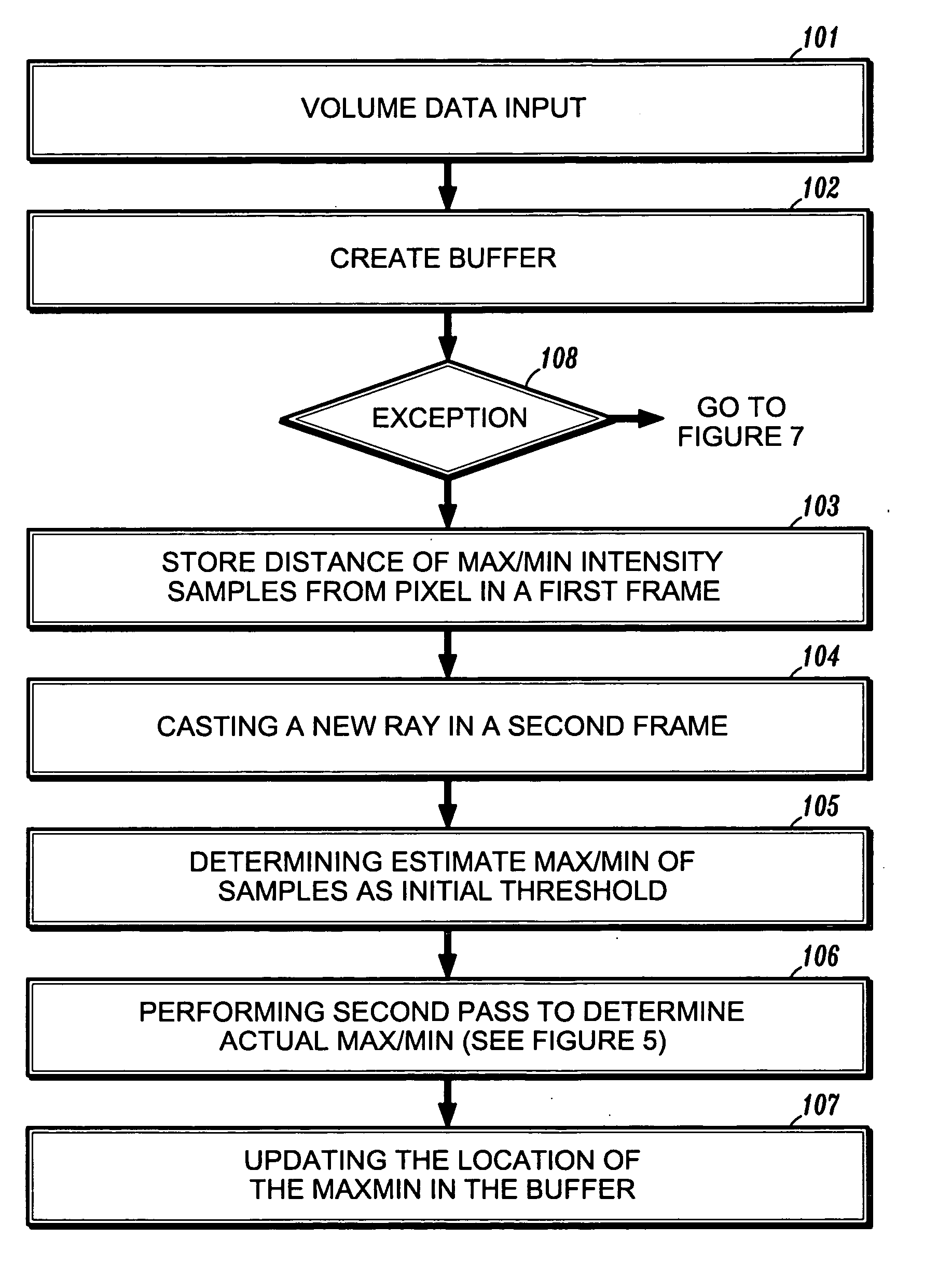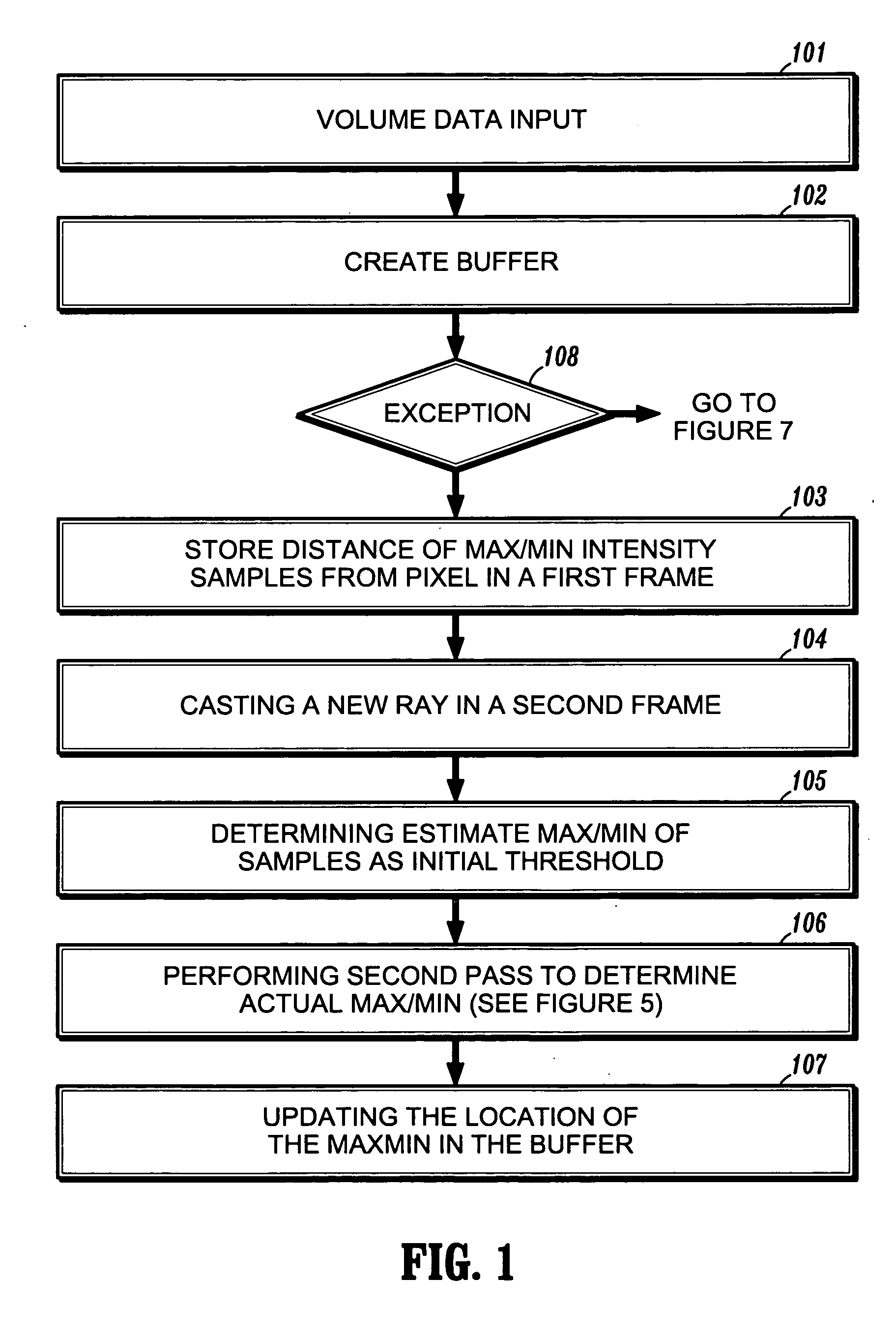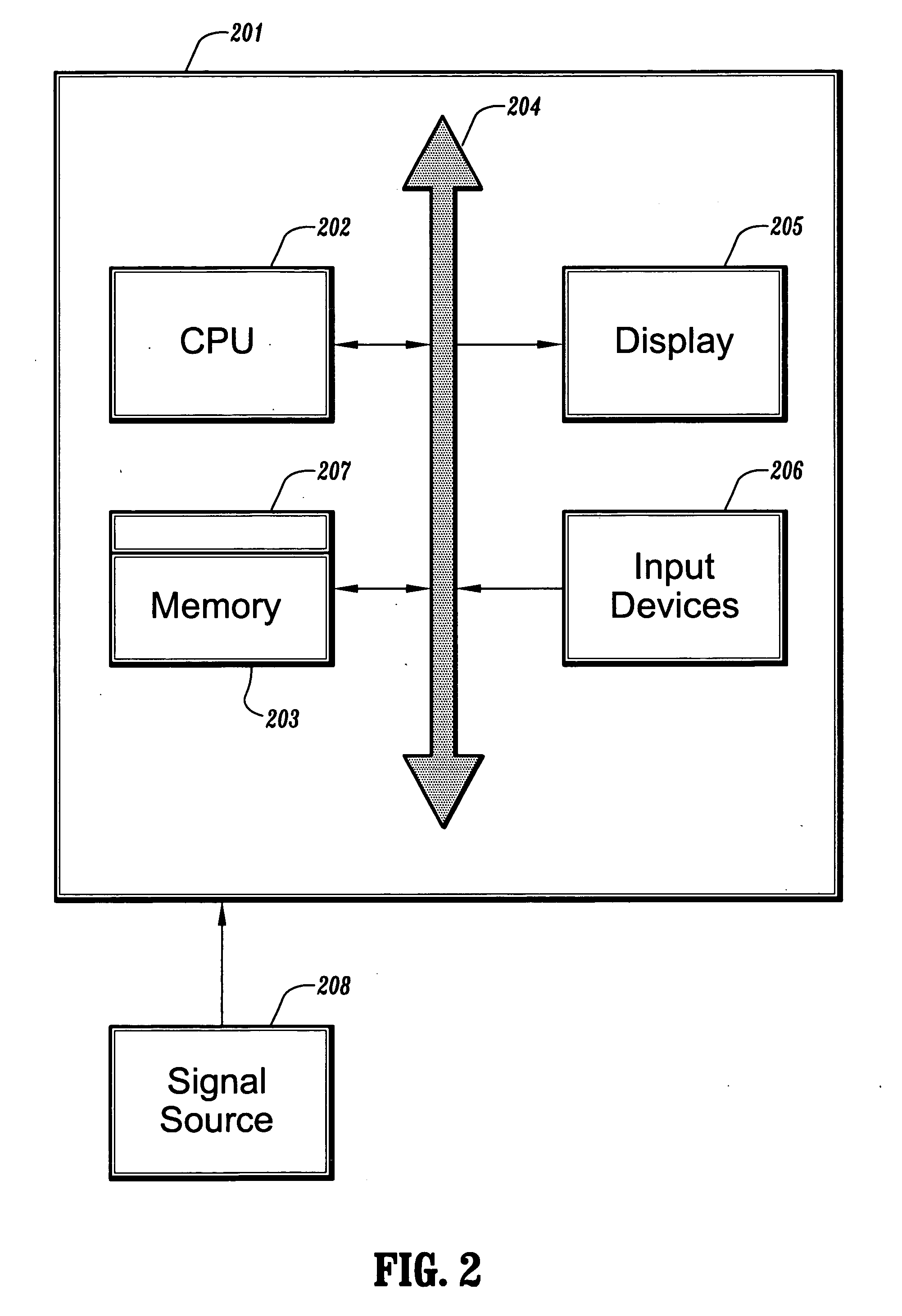Using temporal and spatial coherence to accelerate maximum/minimum intensity projection
a temporal and spatial coherence technology, applied in the field of volume rendering, can solve the problem of intrinsically expensive ray casting based mip
- Summary
- Abstract
- Description
- Claims
- Application Information
AI Technical Summary
Benefits of technology
Problems solved by technology
Method used
Image
Examples
Embodiment Construction
[0022] By reversing the maximum and minimum, methods presented herein are mirror symmetric. Therefore, methods described for MIP can also be applied to MinIP. For simplicity, only methods for determining MIP are described in detail.
[0023] According to an embodiment of the present disclosure, a searching method utilizes coherence information. The coherence information can be obtained in a neighboring ray (spatial coherence) or in a previous frame (temporal coherence) to obtain an initial threshold. The threshold can further accelerate a MIP method.
[0024] To reduce MIP overhead and obtain a threshold, both the temporal coherence and the spatial coherence are used to estimate the initial threshold.
[0025] The location and the value of the maximum intensity along a ray typically does not change much from frame to frame as long as a change in the viewing angle is small, e.g., about 5 degrees. According to an embodiment of the present disclosure, a method for determining a MIP threshold...
PUM
 Login to View More
Login to View More Abstract
Description
Claims
Application Information
 Login to View More
Login to View More - R&D
- Intellectual Property
- Life Sciences
- Materials
- Tech Scout
- Unparalleled Data Quality
- Higher Quality Content
- 60% Fewer Hallucinations
Browse by: Latest US Patents, China's latest patents, Technical Efficacy Thesaurus, Application Domain, Technology Topic, Popular Technical Reports.
© 2025 PatSnap. All rights reserved.Legal|Privacy policy|Modern Slavery Act Transparency Statement|Sitemap|About US| Contact US: help@patsnap.com



